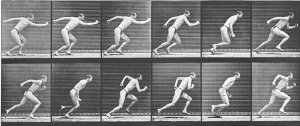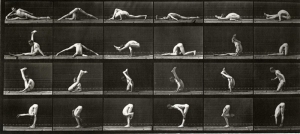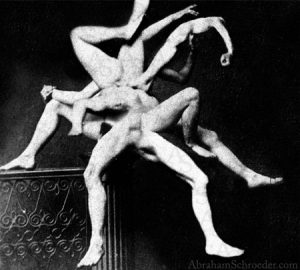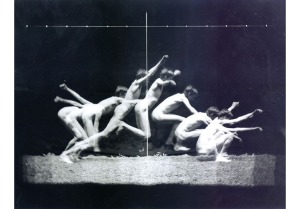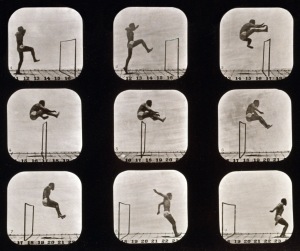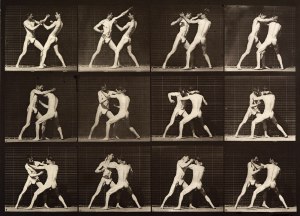So i’ve decided to look at Muybrigde because he looks at how things move. Muybridge was instrumental in the development of instantaneous photography. He even designed his own electronic shutter which had high speed and also created a electro timer to be used alongside his twenty four cameras.
Muybrigde created motion sequences that helped revolutionise still photography, he managed to create history in the motion picture. Muybrigde’s photography helped us to understand the 19th century life by documenting the key events that happened and the ideas within.
The main works I will be looking at is Animals in motion and Humans in motion. Eadweard Muybridge was the man who famously proved a horse can fly.
Muybrigde’s photographs of the horses in motion began in 1872. The first motion sequence photographs were taken by Muybrigde in the year of 1878 when Stanford asked Muybridge to investigate animal locomotion as a phenomenon in itself. Muybridge set up a battery of 12 cameras at Palo Alto and developed a set of electro-shutters and timers. He then began taking a series of 6, 8 or 12 phases of the horse in motion. These photographs were received well, earning him respect in both artistic and scientific communities. These images were extremely technically skilled because there was so much to taking so few photographs.
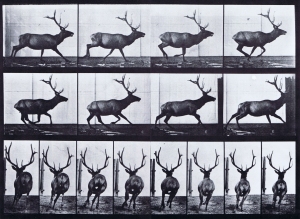

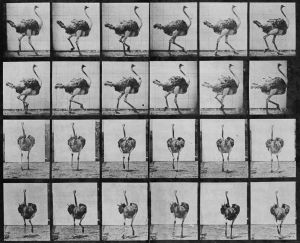
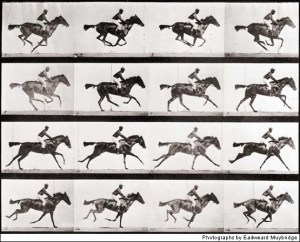
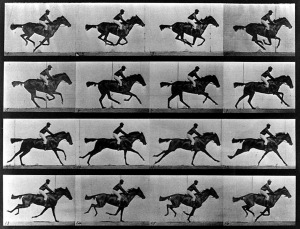
After looking at how animals moved I then looked at his work about how he came about photographing humans move. He was the first to photograph the human figure in motion on March the 4th 1879 however he didn’t focus on the human body until his contract at Pennsylvania University began in May 1884, resulting in two volumes of work dedicated to photographs of human subjects. This extensive work depicted men, women and children variously running, jumping, falling and carrying out athletic or mundane activities. Muybridge only used one non-white model in his motion photography and that was Ben Bailey who was a mixed race male. Muybridge never used an anthropometric grid behind his subjects until he photographed Bailey, and never photographed the human figure without one afterwards. This helped him focus on the motion of the human body after the photograph was developed.
